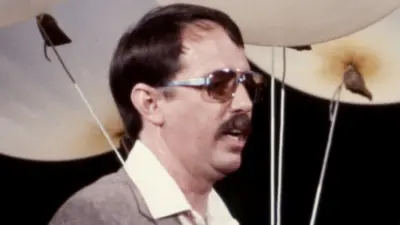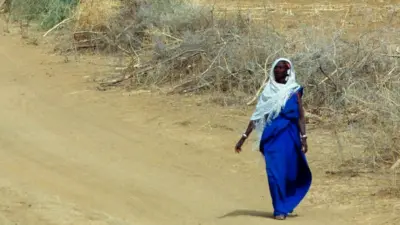We've updated our Privacy and Cookies Policy
We've made some important changes to our Privacy and Cookies Policy and we want you to know what this means for you and your data.
How tanks from Germany, US and UK could change the Ukraine war
- By Jonathan Beale
- Defence correspondent
Image source, EPA
Is this the week when the war dramatically turned in Ukraine's favour? It was certainly a decisive moment, with a coalition of Western nations confirming they were finally willing to supply modern-made main battle tanks.
Germany said it would send Leopard 2 tanks and the US said it would send M1 Abrams tanks. Both the UK and Poland have already made concrete pledges, and other nations are expected to follow. Some commentators have described the move as a potential "gamechanger".
But is it really enough to win the war?
Ben Barry, senior fellow at the International Institute for Strategic Studies (ISS), tells the BBC that Western tanks will make a difference. But the former British Army Brigadier also warns that the pledges made so far are unlikely to prove decisive.
In modern warfare, tanks have been a key element for offensive operations - to punch through enemy lines and retake territory.
Used effectively, they provide mobile firepower, protection, shock and surprise. Concentrated in numbers, they can dislocate an enemy's defences. But they also need the support of artillery to first weaken those defences and then the support of infantry to hold retaken ground.
History shows tanks alone don't win battles. The British first used hundreds of tanks at the battle of Cambrai in November 1917 - to end the deadlock of static trench warfare. Initially they made significant advances, but many tanks soon broke down and a German counter offensive turned British gains into losses.
Tanks can also be used in defence. In 1940 they were used by the retreating British and French armies at Arras to stall the Nazi invasion, allowing the subsequent evacuation of British troops from Dunkirk.
But Ukraine has made clear that it wants weapons not just to stall any potential Russian spring offensive, but to retake its own territory - to go on the attack.
How Ukraine might use tanks as attack spearheads
It would make little sense for Ukraine to disperse its additional tanks across a frontline of more than 1,000km (621 miles). To break through Russian defences, Ukraine will need to concentrate its forces - possibly over an area of between five and 20km (between three and 12 miles).
Hamish de Bretton-Gordon, a former colonel in the British Army's Royal Tank Regiment, says numbers do matter for a breakthrough. An armoured brigade for a significant offensive operation would normally include at least 70 tanks. So more than 100 Western battle tanks could make a big difference, he says.
If Ukraine had more it could try to conduct simultaneous offensive operations in different places, as it did last year in the north and the south.
Then there's the additional support required for what the military call "combined arms manoeuvre".
The UK is not just sending Ukraine 14 Challenger tanks, but also 30 artillery self-propelled guns and armoured vehicles to carry and protect troops.
That new package of military support also includes mine breaching and bridge-laying vehicles. In other words, the essential elements needed for any offensive operation.
The US is also providing Ukraine with more than 100 Bradley and Stryker armoured vehicles, and Germany 40 of its Marder infantry fighting vehicle - as well as tanks.
Tanks are the tip of the spear, designed to move quickly over open ground. The Challenger 2, Leopard 2 and M1 Abrams are faster than most Russian-made tanks with speeds of more than 25mph (40km per hour) on rough terrain.
To take ground quickly, with any element of surprise, they would likely avoid urban areas where they would be more vulnerable to attack. Russia showed early on in this war, in its failed attempt to surround Kyiv, that a long column of armour on a road is an easy target.
Mr Barry, of ISS, says any spearhead attack would look for an enemy's weak points. But he also warns that Russia has spent the last few months reinforcing defensive positions with trenches and tank traps.
Western tanks are also about 20 tonnes heavier than their Russian counterparts. The additional armour gives better protection but it also means the tanks may be too heavy to cross some makeshift bridges. Russia and Ukraine have both blown bridges to slow down advances.
Surprise attacks at night
Mr de Bretton Gordon, who commanded a squadron of British Challenger tanks, says one of the big advantages of Western-made tanks is their ability to fight at night.
Night sights and thermal imaging camera are standard. Only Russia's more advanced tanks - like the T-90 - are fitted to fight at night. Attacks under the cover of darkness also add to the element of shock and surprise.
The greatest challenge for Ukraine will be logistics - maintaining the flow of fuel, ammunition and spare parts. Ukraine is not just having to maintain its old Soviet-era arsenal, it is also having to worry about an increasingly complex inventory of Western supplied weapons.
Britain's Challenger 2 tanks, for instance, do not use the same Nato standard ammunition as the Leopard and Abrams. The Challenger 2 is no longer in production and even the British Army has had to cannibalise some spare parts from its existing fleet.
Mr Barry says Ukrainian engineers may be familiar with repairing diesel engines - like those in the Leopard and Challenger. But he says the US-made Abrams runs on a more complicated gas turbine engine. It also consumes about twice the amount of fuel as a German-made Leopard.
Image source, Getty Images
If Western pledges are firmed, Ukraine's armed forces could be boosted by more than 100 tanks. That would still fall well short of what Ukraine's overall military commander asked for.
Last October, General Valerii Zaluzhnyi said Ukraine needed an additional 300 tanks, 700 infantry fighting vehicles and 500 howitzers for his planned offensive this year. It might end up with just half of that.
The training required on the weapons will take time too - weeks if not months. And it's still not clear when all this equipment will arrive.
The US has indicated that its 31 M1 Abrams tanks might not be ready for months. Ukraine is also waiting for the West to respond to its repeated request for modern warplanes. An army attacking on the ground will need protection from the air.
Western officials had hoped that Ukraine may be able to mount an offensive as soon as this spring. They believe there is now a window of opportunity while Russia struggles to recruit and rebuild its battered forces, and to replenish its dwindling supplies of ammunition.
Ukraine has managed to prove the doubters wrong in the past - but it will still need more Western support if it is to achieve its goal of expelling Russian forces.
Top Stories
Features & Analysis
Most read
Content is not available








